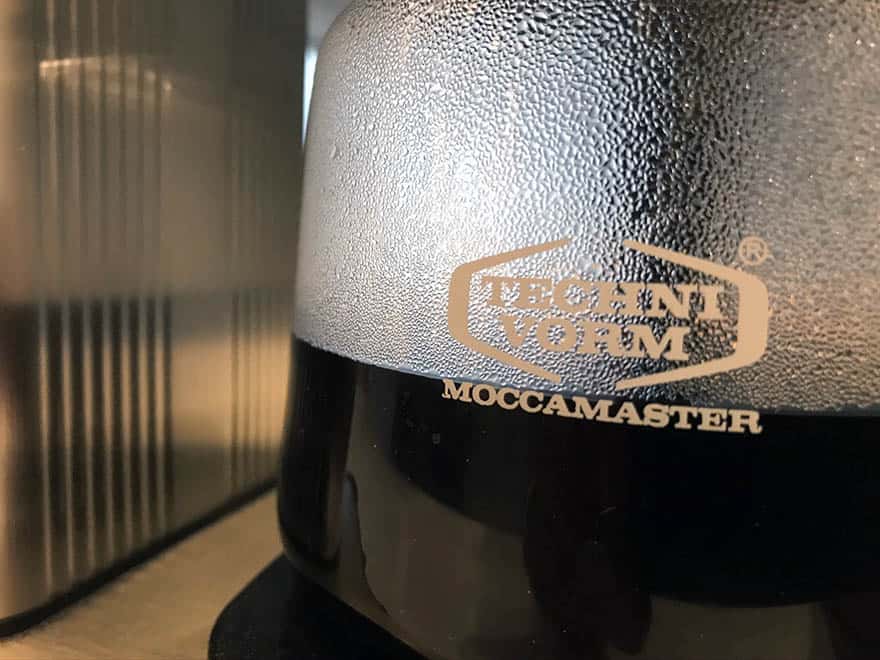Last Updated on December 10, 2023
A friend of mine checked into her vacation rental last summer and texted me a photo of a coffee maker with the caption, “Hey coffee guru, how do I use this thing?”
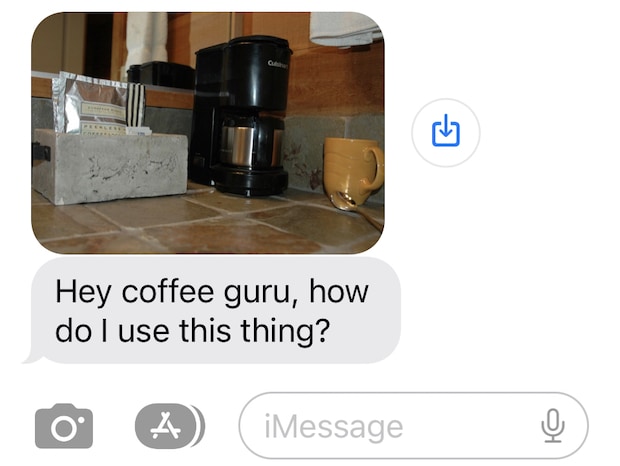
I was a bit shocked, because it wasn’t a fancy coffee maker. But then I realized that plenty of people don’t have coffee machines all over their home like I do. In fact, some people have none at all. It’s not a given that everyone knows how to work a coffee maker.
And if you’re here, then maybe you’re one of those people who don’t. So I’ll explain as best I can.
Using an Automatic Drip Coffee Maker
My coffeemaker at home is a Technivorm Moccamaster. We have a Ratio Six in my office. These are both high-end coffee makers, but they work exactly the same way as a $30 Mr. Coffee machine from your local Target. And if you’ve got a Cuisinart, Black & Decker, Hamilton Beach, Sunbeam or something else, don’t worry—they’re all pretty much the same.
I’ll go into more detail below, but the quick step by step instructions for operating a coffee maker always go something like this:
- Make sure your machine is plugged in
- Pour water into the reservoir
- Fill the filter with ground coffee and position it above the carafe
- Press the brew button
- Wait for brewing to finish
Those are the major steps. Each one has some nuances which I’ll discuss below.
Make Sure Your Machine is Plugged In
Just kidding—this step doesn’t have any nuances. It’s just an easy one to forget and it might be the simplest explanation if nothing seems to be working. Make sure you have power.
Pour Water Into The Reservoir
The simplest way to do this is to simply fill the carafe and then pour that water into the reservoir. But you can use a measuring cup or some other vessel if you want.
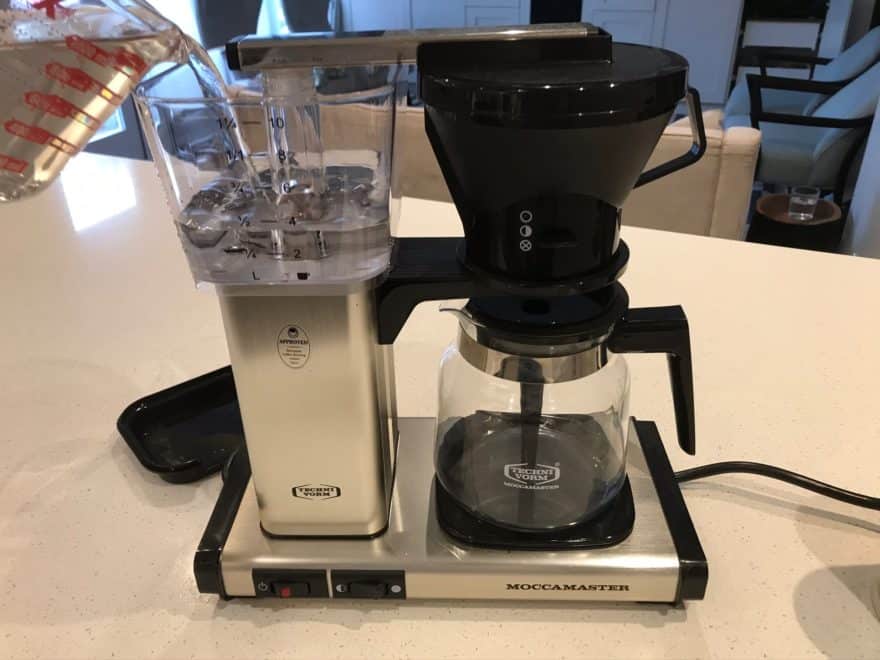
Keep in mind that when you brew, about 20 per cent of the water is absorbed into the coffee grounds and does not turn into coffee. So you’ll want to fill the carafe about 25 per cent past the volume of coffee you want.
A stainless steel carafe doesn’t allow much visibility for measuring water, so in that case I would definitely use a measuring cup or even a scale.
Fill the Filter With Ground Coffee
I don’t know whether you’re using pre-ground coffee or grinding it yourself, but either way, a medium grind will work best with an automatic drip coffee maker.
All drip coffee machines have a filter basket which holds the filter. The filter might be a permanent one, usually made of fine wire mesh, that comes with the machine and slips easily in and out of the filter basket. Alternatively, it might take store-bought paper filters which are disposable after each use.
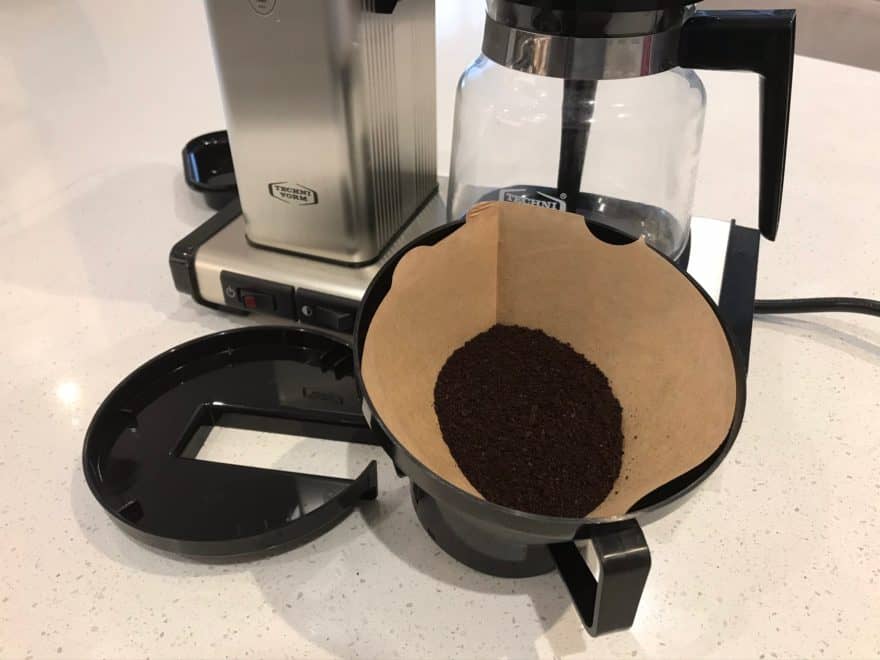
Once that filter is in place, you simply place the grounds in it and give it a little shake to level the grounds.
The short answer is you want two level tablespoons of coffee grounds for each small cup of coffee you plan to brew.
Press the Brew Button
My favourite coffee makers are the ones with just a single brew button and not a lot of fancy electronics to worry about. Sometimes the power button is the brew button.
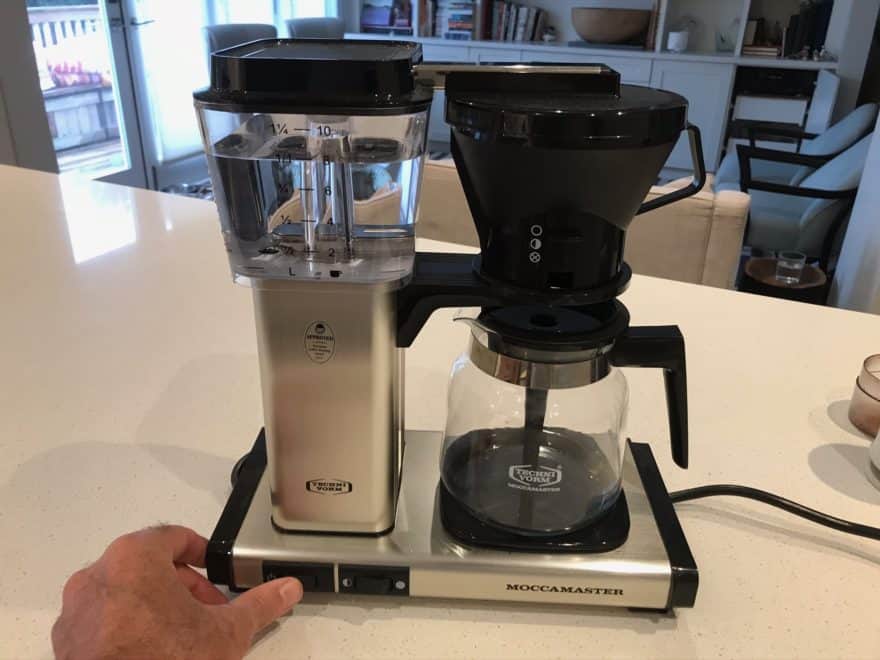
If you’re facing a coffee maker with a panel that looks like the dashboard of a Boeing 737, just find the button that says brew and ignore the rest. Those other buttons might control coffee strength, or allow you to set a timer the night before so the coffee brews just before you wake up. But we’re trying to keep it simple here.
A brew button should simply start the process of heating and pumping water.
Wait for Brewing to Finish
On most machines, a typical brew cycle takes four or five minutes. When it’s done the machine will become a bit quieter. If it has a glass carafe, you’ll see the drips become fewer and farther between. When they’ve more or less stopped, your coffee is ready.
Some coffee makers have a feature called brew-pause, or drip-stop. This is for impatient people who really need to pour that first cup before the machine is finished brewing. The machine senses when you pull the carafe out and it pauses the brew. It won’t resume until the carafe is back in place.
If you’re unsure whether the machine has this feature, it’s best to just let it finish before you remove the carafe. Otherwise, you could have coffee streaming onto the hot plate and counter. Quite a mess.
Keeping The Coffee Hot
Coffee makers usually have either a glass carafe that sits on a hot plate, or a stainless steel thermal carafe with no hot plate.
If it’s glass, you can just leave it there to stay warm, but remember to unplug the machine before you leave for the day.
If it’s thermal, make sure you screw the lid on securely when you’re not drinking so the insulation can do its thing. The coffee should stay warm enough for a few hours.
Tips to Improve Your Coffee
If you’ve made your first carafe and you don’t like the coffee, there are three main things to look at adjusting for next time:
- Coffee-to-water ratio: This is the main reason coffee is too weak or too strong. If your coffee was too weak, either grind more beans for the same volume of water, or use less water for the same amount of beans. Do the opposite if your coffee was too strong.
- Grind size: A grind that’s too coarse can also make coffee taste a bit weak, and sometimes even a touch sour. If the grind is too fine, the coffee will likely taste stronger but might also have a bitter aftertaste.
- Beans: Finally, you might just have beans that aren’t roasted to your liking. Dark roasts have warm, chocolatey, caramelized flavors, while light and medium roasts tend to be more floral and fruity. You should check the beans’ freshness, too—old, stale beans just taste flat and lifeless.
Keep It Clean
My final bit of advice is to make sure the coffee maker is clean. You’d be amazed at how little care some people take with the coffee maker. If you’re in an Airbnb, you might have residues from guests who visited two years earlier.
Wash the major removable parts—including the carafe—with hot soapy water, rinse well and dry. If you’ve got a wire mesh filter, that’s where most of the buildup will be. Put some extra effort into cleaning it, and make sure you rinse it promptly after each use so old coffee doesn’t stick.
And that is how you make coffee in a drip coffee maker.
Now, if you ever find yourself faced with a French press, AeroPress or Nespresso machine, the operating instructions are different. If those are foreign to you, click on the links above and we’ll guide you through it.

